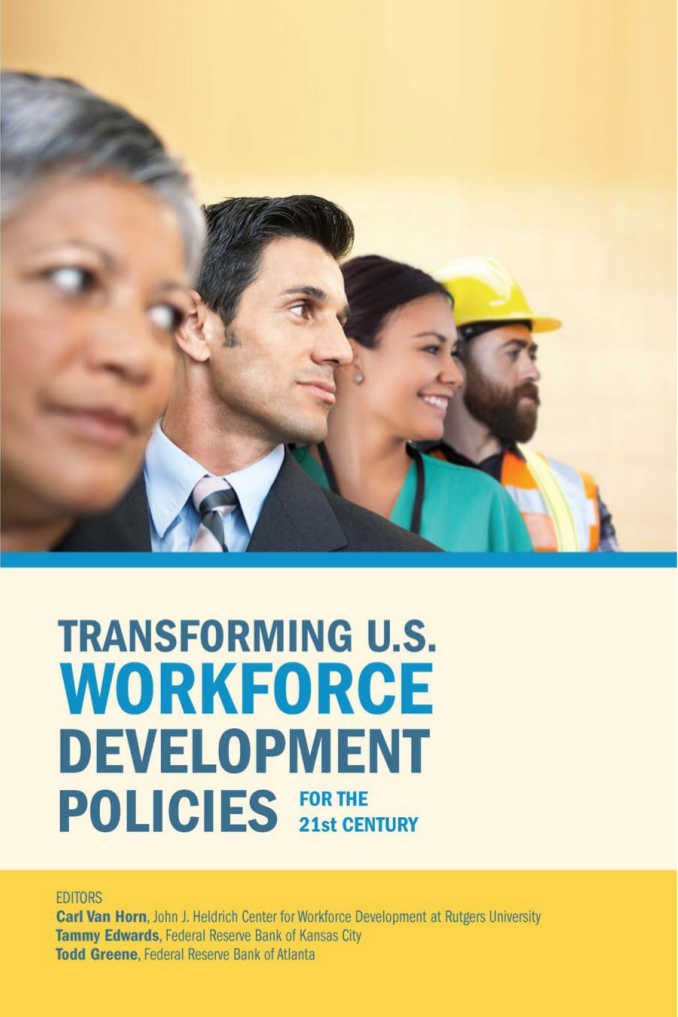Transforming U.S. Workforce Development Policies for the 21st Century explores how new policies and practice can meet the changing needs of workers, businesses and their communities.
Produced in partnership by the Federal Reserve Banks of Atlanta and Kansas City, and the John J. Heldrich Center for Workforce Development at Rutgers University, this edited volume presents contributions from more than 65 leading scholars and practitioners engaged in workforce development. The book includes chapters co-written by two leaders at the Economic Opportunities Program.
Chapter 10: A New Way of Doing Business: The Career Pathway Approach in Minnesota and Beyond
Vickie Choitz, Thomas Norman, and Whitney Smith with Nola Speiser and Brian Paulson
Vickie Choitz, former associate director of the Economic Opportunities Program, co-wrote chapter 10 of this new book, during her tenure at CLASP. Chapter 10 defines the career pathways approach and outlines a framework for building career pathway systems. The career pathways approach aims to help workers attain the education, training, support services, and credentials for specific occupations. In the process, it deeply engages employers, philanthropists, government at all levels and in various branches, and other key community members. Using a case study on Minnesota and the systems framework developed by the Alliance for Quality Career Pathways, Choitz and her fellow writers describe the potential of this model and make recommendations for how best to deepen and sustain this approach.
Chapter 11: Capital IDEA and Austin Community College: A Case Study of Nonprofit-Community College Partnership
Matt Helmer and Maureen Conway
Maureen Conway, Vice President for Policy Programs of the Aspen Institute and Executive Director of the Economic Opportunities Program, co-wrote chapter 11 with former colleague, Matt Helmer. The chapter summarizes findings from research produced by the Workforce Strategies Initiative at the Aspen Institute (AspenWSI) on nonprofit-community college partnerships, or Courses to Employment (C2E) partnerships. Because they combine the resources and capacities of the two types of organizations, such partnerships have the potential to improve the outcomes for low- and moderate-income students seeking postsecondary education to attain better quality work opportunities. In this chapter, Conway and Helmer explore the potential of Courses to Employment partnerships and present a case study on a partnership in Austin, Texas, between Capital IDEA, a nonprofit organization, and Austin Community College.
Click here to learn more about this publication from the Federal Reserve Bank of Kansas City.


